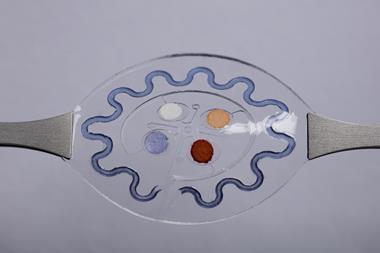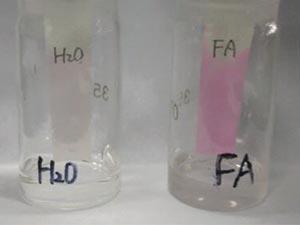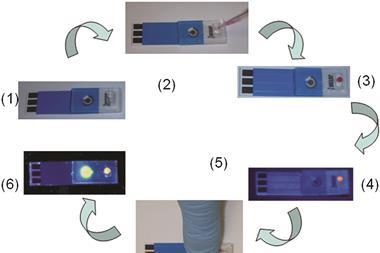Athletes could soon be using flexible sensors to analyse their performance
As we strive to work off the Christmas excesses, personal fitness trackers – which measure activity levels and heart rate, for example – are soaring in popularity. But researchers in the US have taken the idea a step further, and developed a wearable array of sensors that can analyse metabolites in sweat. The device can be made into a wristband or headband, and is flexible and robust enough to be worn during exercise, making it ideal for athletes monitoring their exact physiological state.
‘Sweat contains rich information about what’s happening in the body, with many different substances – from electrolyte ions, metabolites to protein molecules,’ explains Ali Javey from the University of California, Berkeley, who led the research.
Sensors that can measure concentrations of some of these components individually have already been developed. ‘It is very attractive to measure multiple targets at the same time,’ says Javey. ‘Our device contains five sensors that can measure simultaneously the sweat metabolites (glucose and lactate), electrolytes (sodium and potassium ions) and skin temperature.’
The device’s glucose and lactate sensors are based on an enzymatic reaction, involving glucose oxidase and lactose oxidase embedded in a polymer film along with electrodes. The sensors generate electrical signals proportional to the abundance of the corresponding metabolites. Sodium and potassium levels are measured using ion selective electrodes (ISEs). The device also contains a resistance-based temperature sensor made of metallic microwires. The signals generated by all the sensors are transmitted wirelessly to a smartphone where the data can be viewed using a custom app.
The technology goes beyond existing wearable electronics, Javey says, because it ‘bridges the technological gap between signal transduction, conditioning, processing and wireless transmission … by merging flexible sensors that interface with the skin, and silicon integrated circuits consolidated on a flexible circuit board’.
The team tested its sweat-sampling wristbands with the help of volunteers, and showed how the different biomarkers varied with the duration and intensity of exercise as they ran or cycled. And while this kind of fitness monitoring is likely to be one of the technology’s first applications, Javey says similar devices could have medical applications further down the line, as the metabolites they measure can be important indicators of health. Glucose in sweat, for example, is closely linked to blood glucose which is an important measure for diabetes sufferers. And sodium, potassium and lactate levels are all related to muscle health.
John Rogers, who works on flexible electronics at the University of Illinois at Urbana–Champaign in the US, praises the research: ‘An impressive aspect of this new system is its ability to perform highly accurate analytical measurements of multiple, important biomarkers simultaneously, in a single platform. This technology has applicability both in basic studies of human physiology and in a range of clinical applications for health status monitoring,’ he says.
References
W Gao et al, Nature, 2016, DOI: 10.1038/nature16521












No comments yet